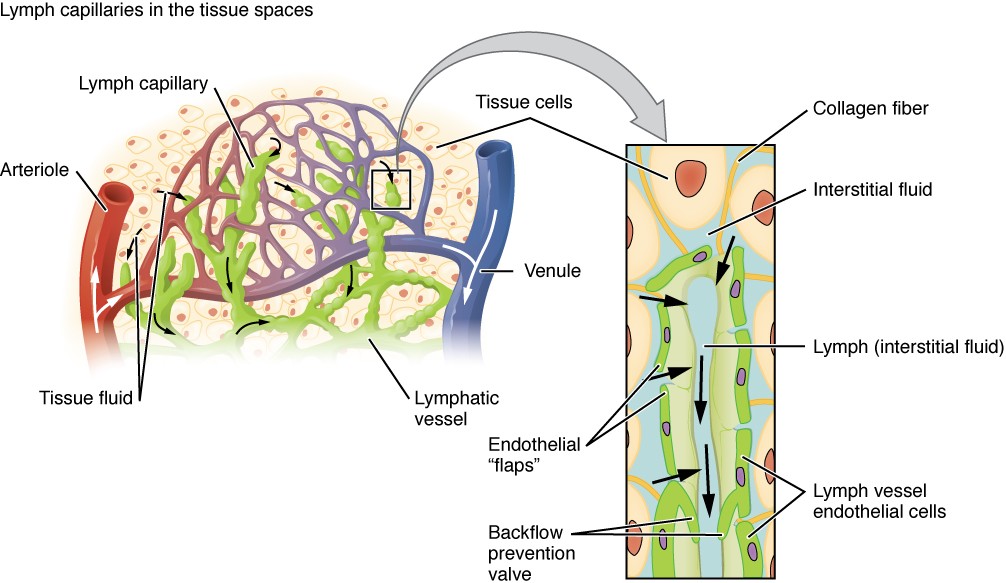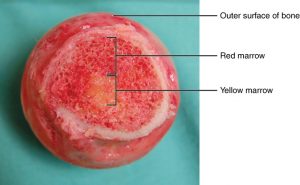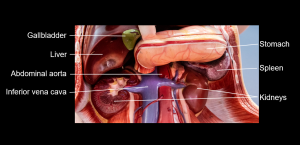Chapter 3: LYMPHATIC SYSTEM
Introduction
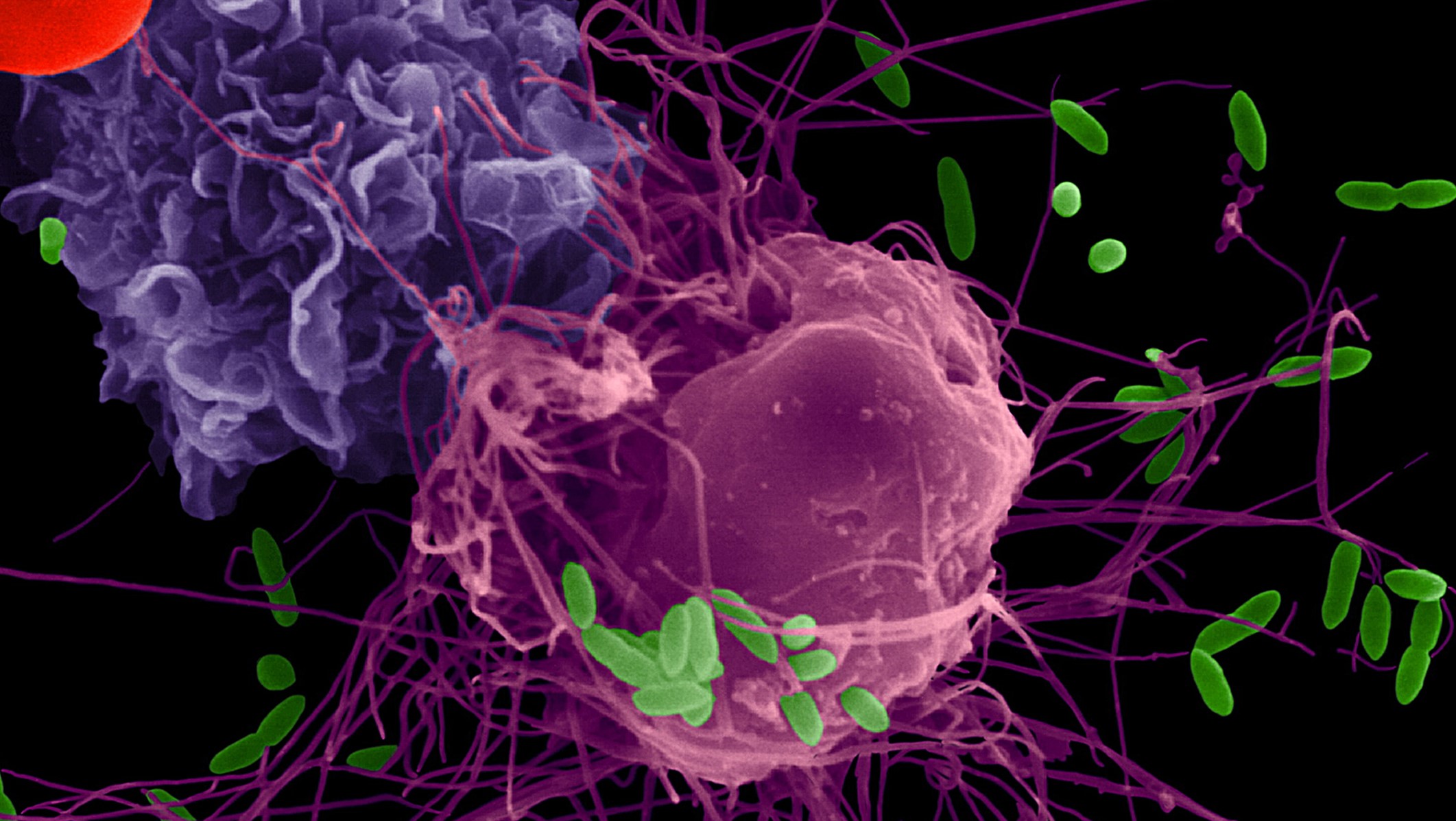
Alveolar immune cells Artificially coloured scanning electron micrograph of the cell and cytoplasmic extensions of a pulmonary monocyte (purple) and macrophage (pink) engulfing foreign infectious cells (green). [https://upload.wikimedia.org/wikipedia/common/7/7e/AJRCCM_4-1-17_Cover.jpg]
Chapter Objectives
After studying this chapter, you will be able to:
- Identify the components and anatomy of the lymphatic system
The immune system is the complex collection of cells and organs that destroys or neutralises pathogens that would otherwise cause disease or death. The lymphatic system, for most people, is associated with the immune system to such a degree that the two systems are virtually indistinguishable. The lymphatic system is the system of vessels, cells, and organs that carries excess fluids to the bloodstream and filters pathogens from the blood.
Anatomy of the Lymphatic and Immune Systems
Learning Objectives
By the end of this section, you will be able to:
- Describe the location, origin and termination of lymphatic vessels, lymphatic trunks and lymphatic ducts
- Describe the flow of lymph from the intercellular compartments to the venous system
- Describe the function, structure and location of the primary lymphoid organs: bone marrow and the thymus; and secondary lymphoid organs: lymph nodes, spleen and lymphoid nodules
- Identify the major locations of lymph node groups
Blood pressure causes leakage of fluid from the capillaries, resulting in the accumulation of fluid in the interstitial space—that is, spaces between individual cells in the tissues. A major function of the lymphatic system is to drain body fluids and return them to the bloodstream via a series of vessels, trunks, and ducts. Lymph is the term used to describe interstitial fluid once it has entered the lymphatic system. A lymph node is one of the small, bean-shaped organs located throughout the lymphatic system. Lymph nodes swell when foreign material is encountered during filtration of lymph.
Structure of the Lymphatic System
The lymphatic vessels begin as open-ended capillaries, which feed into larger and larger lymphatic vessels, and eventually empty into the bloodstream via ducts. Along the way, the lymph travels through the lymph nodes, which are commonly found near the inguinal region, axillary region, neck, thorax, and abdomen. Humans have about 500–600 lymph nodes throughout the body (Figure 3.1).
Figure 3.1 Anatomy of the Lymphatic System Lymphatic vessels in the upper and lower limbs convey lymph to the larger lymphatic vessels in the torso.
A major distinction between the lymphatic and cardiovascular systems in humans is that lymph is not actively pumped by the heart, but is forced through the vessels by the movements of the body, the contraction of skeletal muscles during body movements, and breathing. One-way valves (semi-lunar valves) in lymphatic vessels keep the lymph moving toward the heart. Lymph flows from the lymphatic capillaries, through lymphatic vessels, and then is dumped into the circulatory system via the lymphatic ducts located at the confluence of the internal jugular and subclavian veins in the neck.
Lymphatic Capillaries
Lymphatic capillaries are vessels where interstitial fluid enters the lymphatic system to become lymph fluid. Located in almost every tissue in the body, these vessels are interlaced among the arterioles and venules of the circulatory system in the soft connective tissues of the body (Figure 3.2). Exceptions are the central nervous system, bone marrow, bones, teeth, and the cornea of the eye, which do not contain lymph vessels.
Figure 3.2 Lymphatic Capillaries Lymphatic capillaries are interlaced with the arterioles and venules of the cardiovascular system. Interstitial fluid slips through spaces between the overlapping endothelial cells that compose the lymphatic capillary.
Lymphatic Vessels, Trunks and Ducts
The lymphatic capillaries empty into lymphatic vessels that carry lymph to lymph nodes. Lymphatic vessels are similar to veins in terms of their wall structure and the presence of valves. These one-way valves are located fairly close to one another, and each one causes a bulge in the lymphatic vessel, giving the vessels a beaded appearance (see Figure 3.2). Lymphatic vessels then carry lymph away from lymph nodes and eventually multiple lymphatic vessels merge to form larger lymphatic structures known as lymphatic trunks. There is a trunk for every main region of the body. The lymphatic trunks then connect more medially in the body with two large lymphatic ducts: the thoracic duct or the right lymphatic duct.
The overall drainage system of the body is asymmetrical. The right lymphatic duct receives lymph from only the upper right side of the body. The lymph from the rest of the body enters the bloodstream through the thoracic duct via all the remaining lymphatic trunks. In general, lymphatic vessels of the subcutaneous tissues of the skin, that is, the superficial lymphatics, follow the same routes as veins, whereas the deep lymphatic vessels of the viscera generally follow the paths of arteries.
Primary Lymphoid Organs
The primary lymphoid organs are the bone marrow and thymus gland. The lymphoid organs are where lymphocytes mature, proliferate, and are selected, which enables them to attack pathogens without harming the cells of the body.
Bone Marrow
The red bone marrow is a loose collection of cells where haematopoiesis occurs, and the yellow bone marrow is a site of energy storage, which consists largely of adipocytes (fat cells) (Figure 3.3). In adults the majority of red bone marrow is located in the flat bones of the skull, the vertebrae, ribs, sternum, os coxae (hip bones) and proximal epiphyses of the humerus and femur. All lymphocytes are produced in the red bone marrow in adults. T-lymphocytes migrate to the thymus for their maturation (T-lymphocyte for thymus) and B-lymphocytes mature in the bone marrow (B-lymphocyte for bone marrow).
Figure 3.3 Bone Marrow Red bone marrow fills the head of the femur, and a spot of yellow bone marrow is visible in the center. The white reference bar is 1 cm. [Modification of work by “stevenfruitsmaak”/Wikimedia Commons]
Thymus
The thymus gland is a bi-lobed organ found in the mediastinum of the thorax, anterior to the aorta and superior vena cava and posterior to the sternum (Figure 3.4).
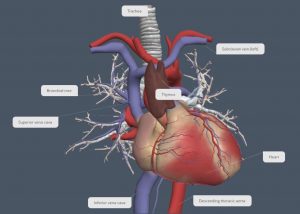
Figure 3.4 Location of the Thymus The thymus lies superior the heart.
Secondary Lymphoid Organs
Lymphocytes develop and mature in the primary lymphoid organs, but they mount immune responses from the secondary lymphoid organs.
Lymph Nodes
Lymph nodes function to remove debris and pathogens from the lymph, and are thus sometimes referred to as the “filters of the lymph” (Figure 3.5). Any foreign material that is identified in the interstitial fluid are taken up by the lymphatic capillaries and transported to lymph nodes. Phagocytic cells (phage=’to eat’; cyte=cell) within this organ internalise, destroy and remove any foreign material.
INTERACTIVE ACTIVITY
The major routes into the lymph node are via lymphatic vessels. Cells and lymph fluid that leave the lymph node may do so by another set of lymphatic vessels that empty lymph into lymphatic trunks in this region.
Lymph nodes are distributed widely throughout the body with clusters localised in regions.
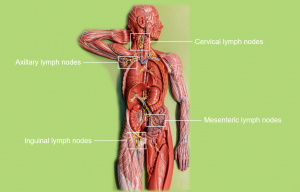
Figure 3.5 Lymph node clusters Lymph nodes are distributed throughout the body in localised clusters in each region.
Spleen
In addition to the lymph nodes, the spleen is a major secondary lymphoid organ (Figure 3.6). It is about 12 cm long and is located against the thoracic diaphragm in the upper left abdominal quadrant. The spleen is a fragile organ without a strong capsule, and is dark red due to its extensive vascularisation. The spleen is sometimes called the “filter of the blood” because of its extensive vascularisation and the presence of phagocytic cells that remove foreign materials from the blood, including dying erythrocytes (red blood cells).
Figure 3.6 Spleen (a) The spleen is attached to the stomach. replace with model
Lymphoid Nodules
The other lymphoid tissues, the lymphoid nodules, consist of a dense cluster of lymphocytes without a surrounding fibrous capsule. These nodules are located in the respiratory and digestive tracts, areas routinely exposed to environmental pathogens.
Tonsils are lymphoid nodules located along the pharynx and are important in developing immunity to oral pathogens. The tonsils located in the oropharynx are the palatine tonsils. These structures accumulate foreign material taken into the body through eating and breathing and help children’s bodies recognise, destroy, and develop immunity to common environmental pathogens so that they will be protected in their later lives.
Key Terms
bone marrow tissue found inside bones; the site of all blood cell differentiation and maturation of B lymphocytes
chyle lipid-rich lymph inside the lymphatic capillaries of the small intestine


